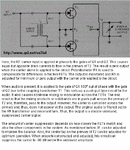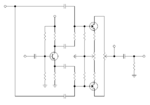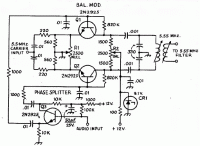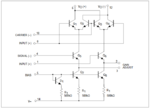neazoi
Advanced Member level 6
During my recent visit to Bournemouth UK, I was discussing with a friend on the plane, about the Twin FET DSB modulator. Attached is such a circuit and I have added the description I have found from another site, that had not got the schematic. I believe that the description matches this schematic, is that right?
I want to use this in my receiver **broken link removed** to make it a transceiver, without the need to re-set the offset at any frequency.
Can you suggest me the circuit components values and FETs to use?
How much input carrier and audio signal shall I feed to it?
Can I use a BJT instead of T1 and get the out of phase AF signals out of it's collector and emitter? Please suggest values for the resistors for that circuit.
Can I use a potentiometer instead of T2?
I want to use this in my receiver **broken link removed** to make it a transceiver, without the need to re-set the offset at any frequency.
Can you suggest me the circuit components values and FETs to use?
How much input carrier and audio signal shall I feed to it?
Can I use a BJT instead of T1 and get the out of phase AF signals out of it's collector and emitter? Please suggest values for the resistors for that circuit.
Can I use a potentiometer instead of T2?
Attachments
Last edited:



